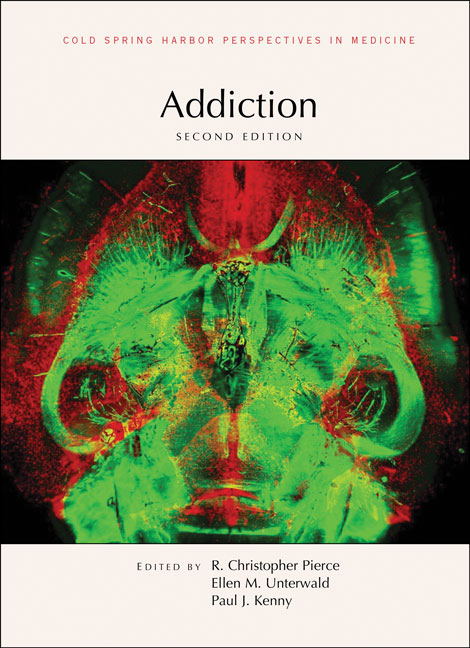New book on addiction from Cold Spring Harbor Laboratory Press
09/22/2020
Addiction to psychoactive drugs found in cigarettes, alcoholic drinks, and opioid analgesics is a severe problem for society. Events associated with addiction--drug abuse, dependence, withdrawal, and relapse--involve complex neurobiological changes in the brain. To develop effective long-term treatment strategies for substance use disorders, a more complete understanding of these brain changes is needed. Written and edited by experts in the field, this collection from Cold Spring Harbor Perspectives in Medicine provides a comprehensive update on our understanding of the biological basis of and treatment strategies for addiction to psychoactive drugs, with an emphasis on opioids. Contributors examine the molecular targets of alcohol, cannabinoids, nicotine, stimulants, and opioids, the resulting changes to the neurocircuitry, and various genetic, environmental, developmental, and behavioral factors that influence the progression from abuse to addiction and susceptibility to relapse. Advances in animal models of addictive behavior and single-cell strategies to dissect neural circuits are also described. In addition, the authors review compounds currently used or under development to treat substance use disorders, their pharmacological mechanisms, and challenges related to preclinical testing in animal models. This volume is an indispensable reference for all neuroscientists and those who are interested in understanding and reducing the public health burden of drug addiction. Please visit our website at cshlpress.org for additional information and to view sample material from this title. Media Contact:
Robert Redmond, Marketing Manager, Cold Spring Harbor Laboratory Press
[email protected] | 
IMAGE: iDISCO (immunolabeling-enabled imaging of solvent-cleared organs) clearing of mouse brain with whole-brain c-FOS mapping. To generate the image, iDISCO brain-clearing and light-sheet microscopy were utilized to visualize white matter tracks (green) and Fos immunoreactivity (red). CREDIT:Image generated by Alexander C.W. Smith, Icahn School of Medicine at Mount Sinai.
|
 Cold Spring Harbor Laboratory Press Bookstore
Cold Spring Harbor Laboratory Press Bookstore

